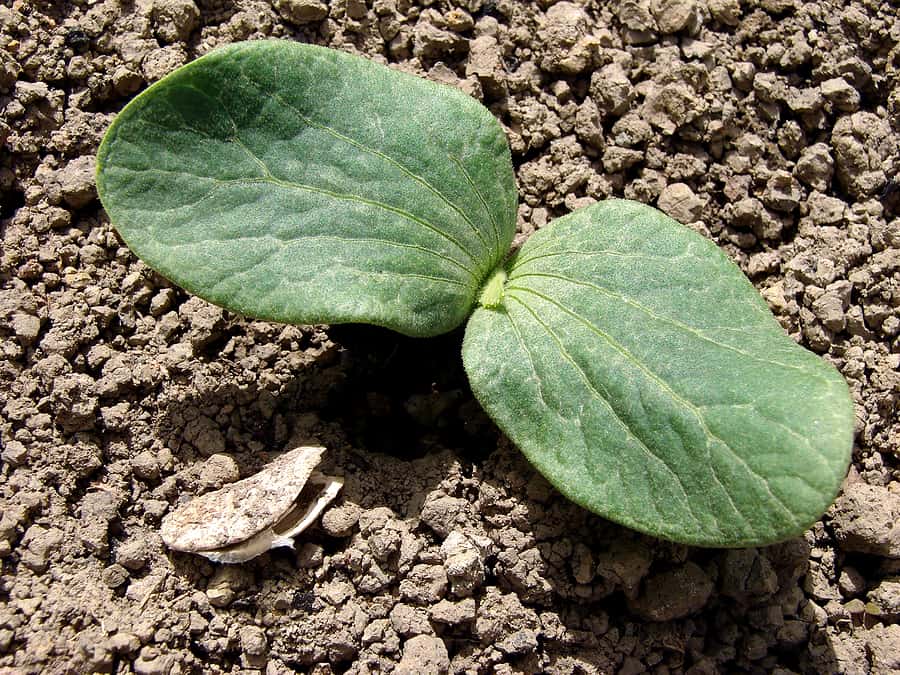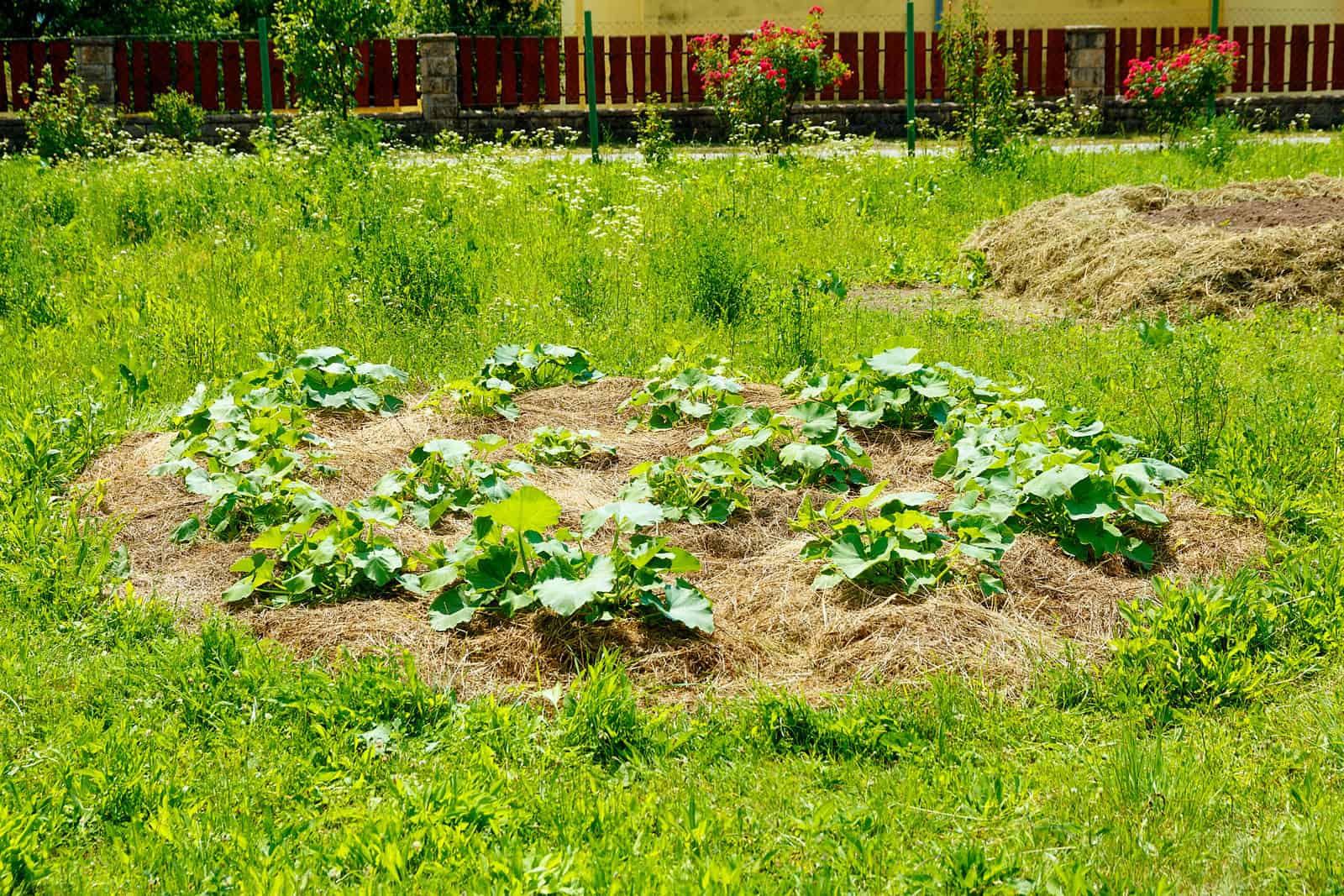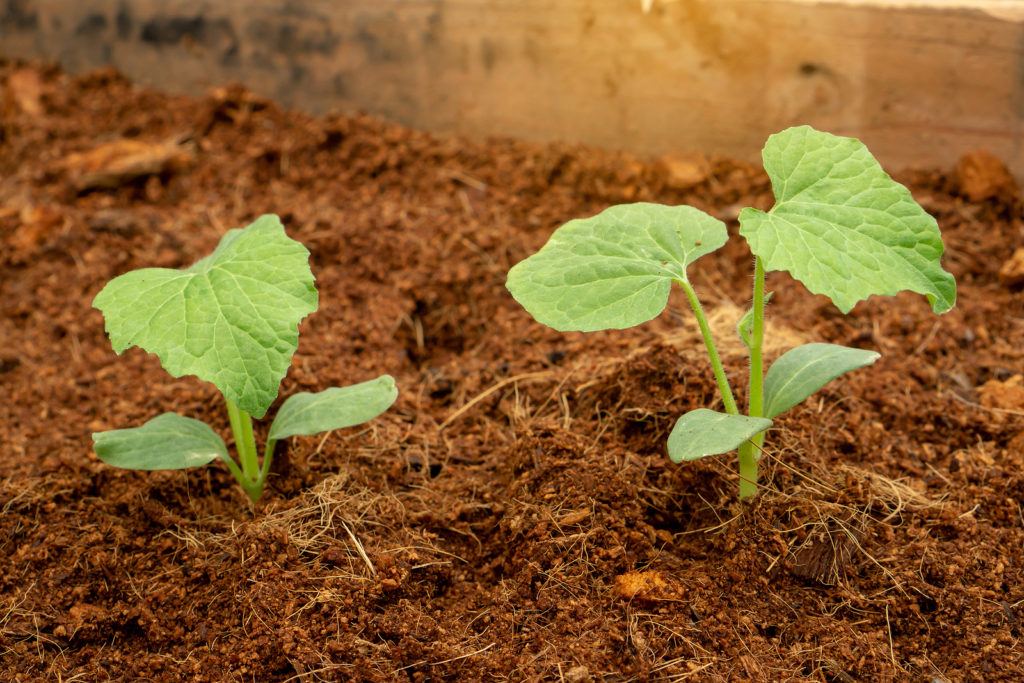Pumpkins are a tender, warm-weather crop. Pumpkins are a type of winter squash—grown through the summer for harvest in the fall.
Plant pumpkin seeds directly in the garden two weeks or more after the last frost. Transplant pumpkin seedlings to the garden 2 to 4 weeks after the last frost; start seeds indoors 4 weeks before setting out seedlings.
The optimal planting soil temperature for pumpkins is 60-85°F (16-29°C). The optimal growing temperature for pumpkins is 60-75°F (16-24°C).
Good Products for Growing Pumpkins at Amazon:
- Garden Safe Snail and Slug Bait
- Bonide Sulfur Fungicide
- Monterey BT Caterpillar Killer
- Neem Bliss 100-% Cold Pressed Neem Oil
- Safer Brand Insect Killing Soap
- PyGanic Botanical Insecticide
In reverse-season climates, a second crop may be planted in early autumn for harvest in winter.
- Sow pumpkins indoors 2 to 3 weeks before the last expected frost in spring then transplant them into the garden after all danger of frost has passed.
- Sow pumpkins outdoors when the soil temperature has warmed to 70°F (21°C). Protect pumpkins in the garden from cool temperatures with row covers.
- Pumpkins mature 60 to 100 frost-free days after sowing depending on the variety.

Pumpkin planting details
- Sowing depth: 1 inch (2.5cm)
- Space between plants after thinning: 3-4 feet
- Days to sprout: 7-10 (soak seeds in water overnight before planting)
- Days to harvest: 90-115
- Storage period: 8-24 weeks
- Seeds per 100-row feet: 1 ounce
- Yield per 100-row feet: 200 pounds
- Suggested varieties: Jack O’Lantern, Small Sugar, Cinderella, Lady Godiva, Green-Striped Cushaw
Pumpkins, like other winter squashes, must fully mature on the vine.
Planting pumpkins
Pumpkins are easy to grow but they generally take up a lot of garden space. A pumpkin plant needs about 10 square feet of growing room if allowed to sprawl.
Pumpkins grow best in humus-rich, well-drained, sandy loam. Add aged compost or a commercial organic planting mix to a depth of 12 inches. Pumpkins are often planted atop mounds or hills allowing the vines to run down the hill where they can be trained to circle the mound.
Pumpkins are heavy feeders needing a moderate amount of nitrogen and a high amount of phosphorus. Add a slow-release organic fertilizer to the soil at planting time. Plant pumpkins in full sun.
Pumpkin sowing and planting tips
- Grow pumpkins from seeds or seedlings.
- Pumpkin seeds are viable for 6 years.
- Direct sow pumpkins in the garden in spring after all danger of frost has passed and the soil has warmed to 70°F (21°C). In warm-winter regions, sow pumpkin seeds in midwinter for harvest in early summer.
- To start pumpkins indoors before the last frost in spring, sow seed in peat pots 4 to 3 weeks before planting out. The indoor temperature should be 66°F to 85°F (18-29°C) until germination.
- Pumpkin seeds will not germinate at a soil temperature below 66°F (18°C).
- Sow seed ½ to 1 inch (1.3-2.5 cm) deep.
- Seeds germinate in 4 to 10 days at 85°F (29°C) or warmer.
- Space plants in the garden 12 to 18 inches (30-45 cm) apart in all directions.
- Pumpkins will benefit from the warm soil created by planting on hills or mounds; raise the soil 12 inches (30 cm) tall and 20 inches (50 cm) wide and grow individual plants on hills. Space hills 4 to 5 feet (1.2-1.5 m) apart.
- Water to keep the soil from drying.
- Fertilize with fish emulsion or a soluble complete fertilizer at half strength.
- Add aged compost to planting beds in advance of transplanting.
- Pumpkins prefer a soil pH range of 5.5 to 6.8.
- Grow pumpkins in full sun for best yield.
- Avoid planting pumpkins where cucumbers or melons have grown recently.
- Common pest enemies include aphids, cucumber beetles, flea beetles, squash bugs, squash vine borers, slugs, and snails.
- Common diseases include bacterial wilt, fusarium wilt, downy mildew, powdery mildew, and cucumber mosaic.
Interplanting: Plant pumpkins with bush beans, corn, dill, eggplant, lettuce, cucumbers, squash, and tomatoes.
Container Growing Pumpkins: Pumpkins are not a good choice for container growing. They require significant room to spread and grow.
Pumpkin planting calendar
- 3-4 weeks before the last frost in spring: start seed indoors for transplanting into the garden later.
- 2-3 weeks after the last frost in spring: transplant seedlings to the garden; minimum soil temperature 60°
- 3 weeks after the last frost in spring: direct sow seed in the garden.

Pumpkin planting dates
(These dates are for the Northern Hemisphere)
| Average date of the last frost | Planting dates |
| Jan. 30 | Feb. 1-Apr.15 |
| Feb. 8 | Feb. 15-Apr. 15 |
| Feb. 18 | Mar. 1-Apr. 15 |
| Feb. 28 | Mar. 15-Apr. 30 |
| Mar. 10 | Apr. 1-May 15 |
| Mar. 20 | Apr. 10-May |
| Mar. 30 | Apr. 10-June 1 |
| Apr. 10 | Apr. 20-June 1 |
| Apr. 20 | May 1-June 15 |
| Apr. 30 | May 1-Jun. 10 |
| May 10 | May 10-June 15 |
| May 20 | May 20-June 15 |
| May 30 | June 1-20 |
| June 10 | June 10-20 |

Pumpkin harvest time
Pumpkins mature in 90 to 115 days. Pumpkins are ready for harvest when skins lose their sheen. The shells should be hard enough to resist denting by a thumbnail.
Pumpkins are best harvested as late as possible in autumn but before the first hard frost.
Pumpkin varieties to grow
- ‘Rouge Vif d’Etampes’, ‘Red Etampes’, and ‘Cinderella’ are classic orange pumpkins.
- Other varieties include ‘Atlantic Giant’, ‘The Great Pumpkin’, ‘Howden’, ‘New England Pie’, ‘Wee-B-Little’.
Botanical Name: Cucurbita maxima
Pumpkins are a member of the Cucurbitaceae family; other members are cucumbers, melons, watermelons, and pumpkins.
More tips: How to Grow Pumpkins
Squash articles at Harvest to Table:
How to Grow Summer and Winter Squash
How to Plant and Grow Pumpkins
How to Harvest and Store Summer Squash
How to Harvest, Cure, and Store Winter Squash
How to Harvest and Store Pumpkins
Eight Ways to Cook and Serve Summer Squash
Seven Ways to Cook and Serve Winter Squash
How to Make Creamy Pumpkin Soup
How to Cook and Serve Squash Blossoms
Squash Growing Problems: Troubleshooting
Squash Vine Borer Organic Pest Control
Squash Bug Organic Pest Control
Corn, Beans, and Squash: The Three Sisters
Garden Planning Books at Amazon:
- Vegetable Garden Grower’s Guide
- Tomato Grower’s Answer Book
- Vegetable Garden Almanac & Planner
- Kitchen Garden Grower’s Guide Vegetable Encyclopedia



